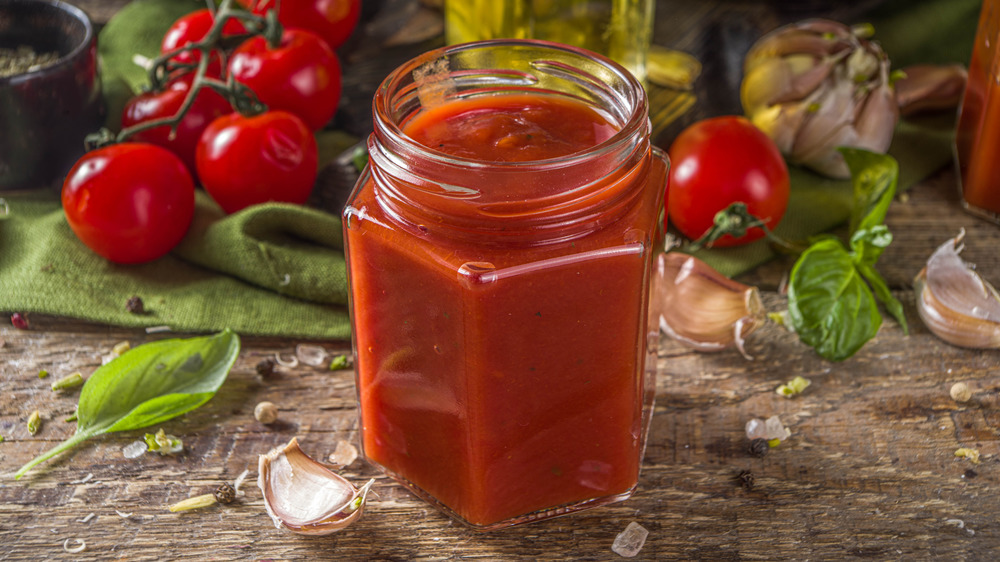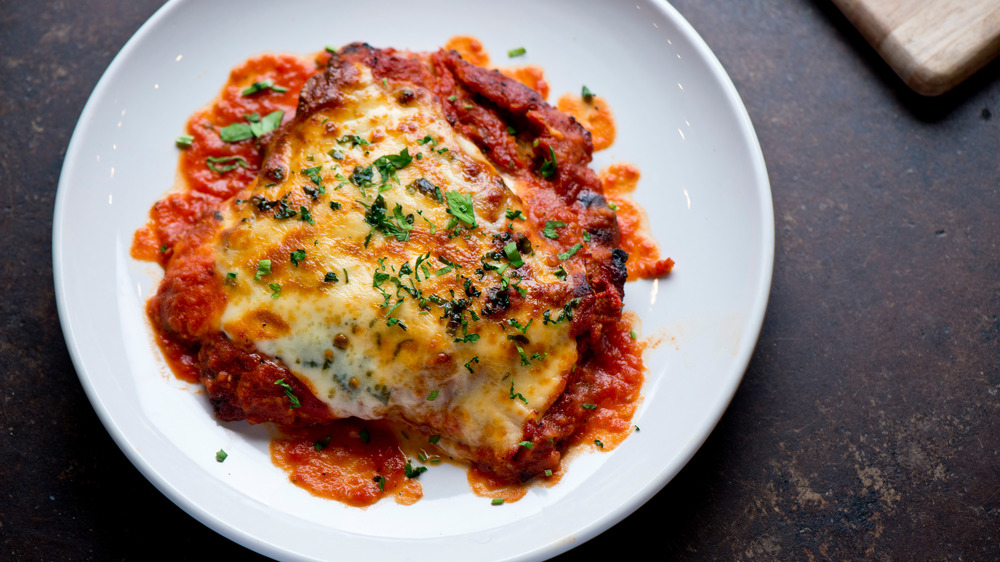Mistakes You've Been Making With Marinara Sauce
Pasta has become as American as hot dogs, hamburgers, and apple pie — you would have a hard time going to any town in America and not finding at least one Italian restaurant that boasts about their marinara and pasta combos. According to National Geographic, one out of eight restaurants in the United States identified as an Italian restaurant by 2016. As this style of cooking became set in the American identity, the ways in which the ingredients and sauces were used changed to not only fit the particular tastes of specific regions but also to fit the common ingredients in different states. After all, trying to track down an imported bottle of capers or a pack of prosciutto could prove challenging if you live miles away from an Italian market.
With these challenges in place, marinara survived the years through its delectable taste. However, when you compare a common US marinara to a homegrown Italian variety, you can immediately detect a stark difference. Unless you grew up in a family with a traditional marinara recipe, you probably had to do a bit of guesswork to create your own mainstay recipe. Even then, a handful of rookie mistakes lurk just underneath the recipe's surface if you didn't grow up with a nonna who could show you the proper way to develop flavor.
What makes marinara taste so good?
The key to developing an optimal marinara sauce lies in showing off the tastes of quality ingredients and not overcomplicating the flavor profile. According to Chef Works, most home cooks' problems stem from overlooking freshness and simplicity. For the optimal sauce, feel free to use high-quality canned tomatoes if you can't get access to fresh, in-season tomatoes. To create the best-tasting marinara, make sure to cook it for long periods of time, and don't add any frivolous ingredients into the mix — it only confuses the flavor. Season the sauce as you go, not just at the end, and make sure to avoid pulverizing it in a food processor. After all, our mouths love texture, and the rustic chunks of tomato only add to that.
If you plan on serving your marinara with pasta, you can use a secret ingredient that takes your sauce to the next level – pasta water. Mix a cup of the water you boiled your pasta in with your marinara to create a silky-smooth texture anyone can love (via Chef Works). To whip up a batch of marinara that can take you back to the old country, make sure to keep things simple and let the ingredients shine, and you'll be part of a culinary tradition that stretches back for centuries.

